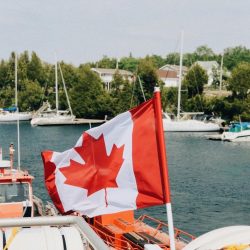The 2017 immigration plan allowed a base number of 300,000 immigrants into Canada. It mainly targeted immigrants of the economic class, followed by family class immigrants, refugees, and humanitarian cases. The Liberal government is now in the process of finalizing a 2018 immigration plan, which will set the target number for the next year. The government’s goal is to “attract top talent in a competitive global market while reuniting families and offering refuge to people displaced by disaster and conflict” (CBC). Some of the issues at hand are the need to fill labour gaps, some of which are brought about by an aging population and low birth rate, as well as to make a commitment to settling and integrating refugees.
The Labour Gap
Immigrants who move to Canada for employment purposes are often driven to the major urban centers. However, there is a great need for work in some of the more remote and less populated parts of the country. Michelle Rempel, a conservative immigration critic, says that “the government has so far failed to develop a sound strategy” to bring immigrants into the areas and sectors that have labour gaps. The government’s Advisory Council on Economic Growth recommended an increase in immigration levels to 450,000 by 2021 in order to compensate for an aging population and low birth rate. According to Patrick Snider, Director of Skills and Immigration Policy for the Canadian Chamber of Commerce, this target level can only be achieved by taking a certain approach. He suggests targeting individuals with the right skills for in-demand occupations in order to boost the economy. Instead of focusing solely on those with formal education and “technical specifications,” the selection process should consider qualities of “intelligence, drive and trainability”(CBC). NDP Immigration critic Jenny Kwan takes a similar stance, arguing that the government should put in place a more ambitious plan. She says that instead of only considering high-skilled workers for permanent residency, those who would normally be lower-skilled temporary foreign workers should also be considered.
Refugees
Janet Dench, the executive director of the Canadian Council for Refugees, claims that Canada has the capacity to settle more refugees than the 7,500 it targeted in 2017. Using the settlement of Syrian refugees Canada took on in 2016, she says that instead of making just a one time effort, Canada should make a “sustained commitment” to the refugee crisis. Along with the issue of refugee resettlement is that of integration. With an increase in the number of asylum seekers in Canada and an overall global migration crisis, Rempel says the 2018 plan must be adaptive. “The government,” she says, “must do more to ensure refugees are properly integrated and become productive members of the workforce” (CBC). The Conference Board of Canada said in a recent report that the government must address challenges of integration before they can increase immigration levels. If they do not, it could hurt rather than help the economy.
The government has a number of issues to take into account before releasing the new immigration plan and deciding upon a numeric level of immigration. While an increase in immigration can lead to economic growth, critics and leaders argue that labour gaps must be filled and integration of newcomers must be achieved. If these goals are not met and resources are exhausted, public support for immigration could be weakened and the economy could be negatively impacted.







